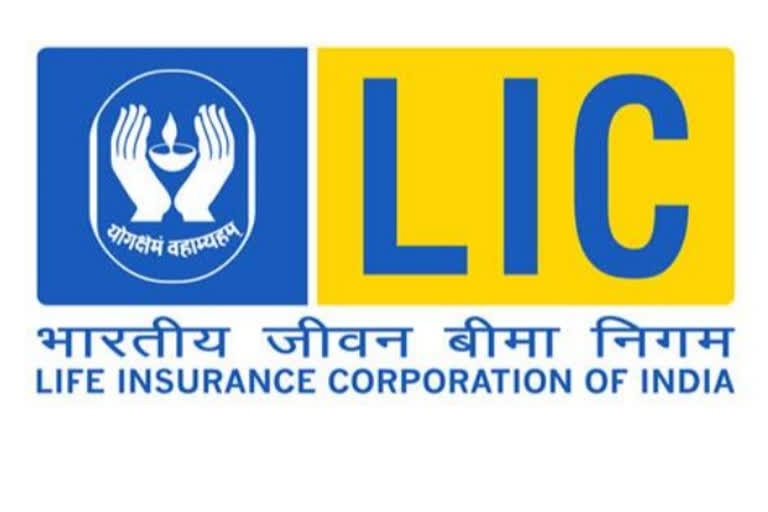Hyderabad: Criticism has been pouring in from all corners ever since Finance Minister Nirmala Sitharaman announced that the government would sell part of its holding in Life Insurance Corporation (LIC). Employee unions are furious about the FM’s decision. They questioned the motive behind selling shares of an organization that has been consistently registering profits.
The central government has proposed 27 amendments to Life Insurance Corporation Act, 1956, to help facilitate listing of the insurance giant, making in untenable for wide debate in the Parliament. It is necessary to assess the impact of this decision on policyholders, the people, and the government. In the coming 10 years, LIC will bring a revenue of Rs 10,000 crore annually in dividends, and an additional Rs 35,000 crore in taxes to the government. It is unjust on the part of the government to sell its shares to cover up the budget deficit or to reach the stipulated investment withdrawal target.
Also read:Telegram, WhatsApp in tug of war over privacy
The company’s capital will be raised from the actual Rs 100 crore to Rs 25,000 crore (2,500 crore shares worth Rs 10 each). The amendments also direct that the government should limit its stake to 51 per cent in the next five years. Thus, there is a risk of LIC slipping out of the government’s control. All the government could benefit from this lengthy exercise is mobilize Rs 1 lakh crore. However, LIC’s investments generate revenue of Rs 4 lakh crore per annum to the government.
Discrepancy in valuation
The Centre has entrusted Milliman with the task of computing the embedded value (EV) of LIC. According to actuaries, estimating a firm’s embedded value is quite a complex affair. The dividend value of companies that pay dividends for three consecutive years or more is calculated using the dividend discount model. According to the model, if the dividend growth rate paid by the company is 4 per cent or more, its value is infinite. From 1988-89 to 2018-19, the dividend paid by LIC to the government increased from Rs 48 crore to Rs 2,660 crore. That is an annual growth of 14.32 per cent. Hence, its value is considered to be infinite. Another important factor to consider when computing LIC’s EV is the enormous assets the company has.
Also read:Amazon India launches free video streaming service on shopping app
LIC equals credibility
The central and state governments have been handing over many social welfare schemes to LIC. Even after two decades of the advent of private insurance companies, LIC has maintained its market share of 66 per cent in terms of policies and 75 per cent in terms of premiums as of March 2021. This is because people trust the insurance giant better than other private insurers. Over the decades, LIC’s growth rate, claim payment methods, bonuses and dividends to policy holders and governments have boosted public confidence. There is no scientific way to evaluate all these parameters.
Should the government sell LIC shares?
Vast assets
As of March 2021, the insurance giant has assets worth Rs 32 lakh crore. These assets belong neither to LIC nor to the government. The government only has Rs 100 crore in investment. The assets belong to with profit policyholders who have the power to share LIC’s surplus. Policyholders have the rightful claim to huge solvency margin funds as per regulatory authority. According to section 28 of LIC Act 1956, 95 per cent of the tax-deductible surplus of the entity is held by the policyholder. Then, the remaining 5 per cent goes to the government in the form of dividends. All the policyholders, including the government, are shareholders in LIC. No insurance company in the world has such unique law.
Also read:GST Council to hold virtual meeting on May 28
Public protests must reach the government
Though the surplus distribution system in the company was changed to 90:10 between the policyholders and the government as per the IRDA amendments in 2012, the central government has been following the 95:5 policy. But once the shares are sold, the new investors may not abide by this policy. If that happens, in addition to lesser policyholder bonuses, the dividend to the government will also decrease. There will be a dent in government revenues in the long term, creating a fund crunch for public welfare schemes. These are the major reasons why every section of the society has opposed the FM’s decision in Union Budget 2020. LIC is the only insurance company that offers affordable plans for the middle and lower income groups. As a result of dissent among these groups, the government had to increase the slab on income tax on PF deposits interest to Rs 5 lakh per annum. If the public outcry over the sale of LIC shares hits the Center, there may be a chance of reconsideration.
The reliability factor
The main factor to be considered in LIC’s EV is the company’s goodwill and brand value. In a 1994 survey conducted by the government-appointed Malhotra committee on LIC’s performance, 95 per cent of the respondents readily recollected the LIC logo. This was 27 years ago, when there were no media for widespread publicity. According to a recent report released by London-based Brand Finance Insurance, LIC became the third largest insurance company and the 10th most valuable insurance brand in the world in 2021. The report added that the value of the world’s top 100 insurance brands in 2020 fell by 6 per cent while LIC’s value grew by 6.8 per cent. For the past 10 years, LIC continues to stand at Number 1 or 2 in the annual Brand Equity survey conducted by a private news channel. Computing the embedded value of such an insurance behemoth is surely a daunting task.
